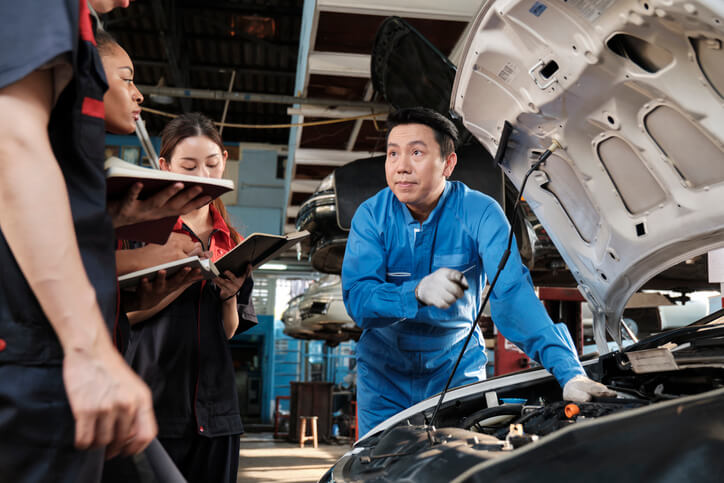Mechanic’s Guide to Fuel System Maintenance
Fuel system maintenance is a core focus in any comprehensive automotive training program, such as CATI school, where students get the hands-on experience needed to understand and service modern fuel delivery systems.
A vehicle’s fuel system plays a critical role in delivering the right amount of fuel at the right time for optimal engine performance. When it’s clean and well-maintained, everything runs smoothly. But when neglected? Expect hard starts, poor mileage, stalling, and long-term engine damage.
Whether you’re just starting or looking to brush up on the basics, here’s a breakdown of what aspiring mechanics need to know about fuel system maintenance.
What Makes Up the Fuel System?
Before you can maintain a fuel system, you need to understand its parts. A modern fuel system typically includes:
- Fuel tank: Stores fuel until needed
- Fuel pump: Sends fuel from the tank to the engine
- Fuel filter: Traps debris before fuel reaches the injectors
- Fuel injectors: Spray fuel into the engine’s combustion chamber
- Fuel pressure regulator: Keeps fuel pressure within the correct range
- Electronic control module (ECM): Monitors engine needs and adjusts fuel delivery
Each of these components must work in sync to maintain efficiency and emissions standards. Even one clogged or malfunctioning part can throw off the entire system.
Why Fuel System Maintenance Matters
Clean fuel and a healthy system mean better combustion, improved power, and reduced emissions. But that’s not all. Proper fuel system maintenance also:
- Prevents carbon buildup in injectors
- Reduces the risk of fuel line corrosion
- Increases engine life
- Improves throttle response
- Boosts fuel economy
At CATI school, students learn to approach every inspection or tune-up with the full system in mind, not just the symptoms the vehicle is showing.

Key Maintenance Tasks Every Mechanic Should Know
1. Fuel Filter Replacement
Over time, filters become clogged with dirt and debris. Replacing the fuel filter ensures that clean fuel reaches the injectors, preventing clogs and misfires.
2. Fuel Injector Cleaning
Injectors can accumulate carbon deposits, especially in direct injection systems. Technicians clean or replace injectors to restore even spray patterns and consistent performance.
3. Fuel Pump Testing
A weak or failing fuel pump can cause stalling or hard starts. Mechanics test fuel pressure and flow to confirm the pump’s condition.
4. Checking the Fuel Pressure Regulator
If the regulator fails, the engine may get too much or too little fuel. Students in automotive training learn to identify pressure irregularities during diagnostic procedures.
5. ECM and Sensor Diagnostics
Since modern systems are electronic, mechanics also use scan tools to check sensors, control modules, and error codes related to fuel delivery.
Hands-on experience with these systems at an automotive school helps students connect the dots between performance issues and fuel system faults.

Warning Signs of a Fuel System Problem
Drivers often come to the shop with symptoms like:
- Difficulty starting the engine
- Loss of power during acceleration
- Poor fuel economy
- Engine misfires or rough idling
- The check engine light turning on
Students at CATI learn to trace these symptoms back to root causes, often starting with the fuel system, and provide accurate, efficient repairs.
Received Comprehensive Automotive Training at CATI
At CATI school, students gain real-world experience diagnosing, maintaining, and repairing complete fuel systems. Through lab sessions and shop training, they:
- Work with both gasoline and diesel systems
- Practice using scan tools and fuel pressure gauges
- Learn best practices for safety, diagnostics, and preventative maintenance
- Understand emissions regulations and how fuel systems play a role
By the time they graduate, CATI students are ready to help customers keep their engines healthy and their fuel bills low.
Do you want to explore automotive programs at CATI school?
Contact us for more information.

